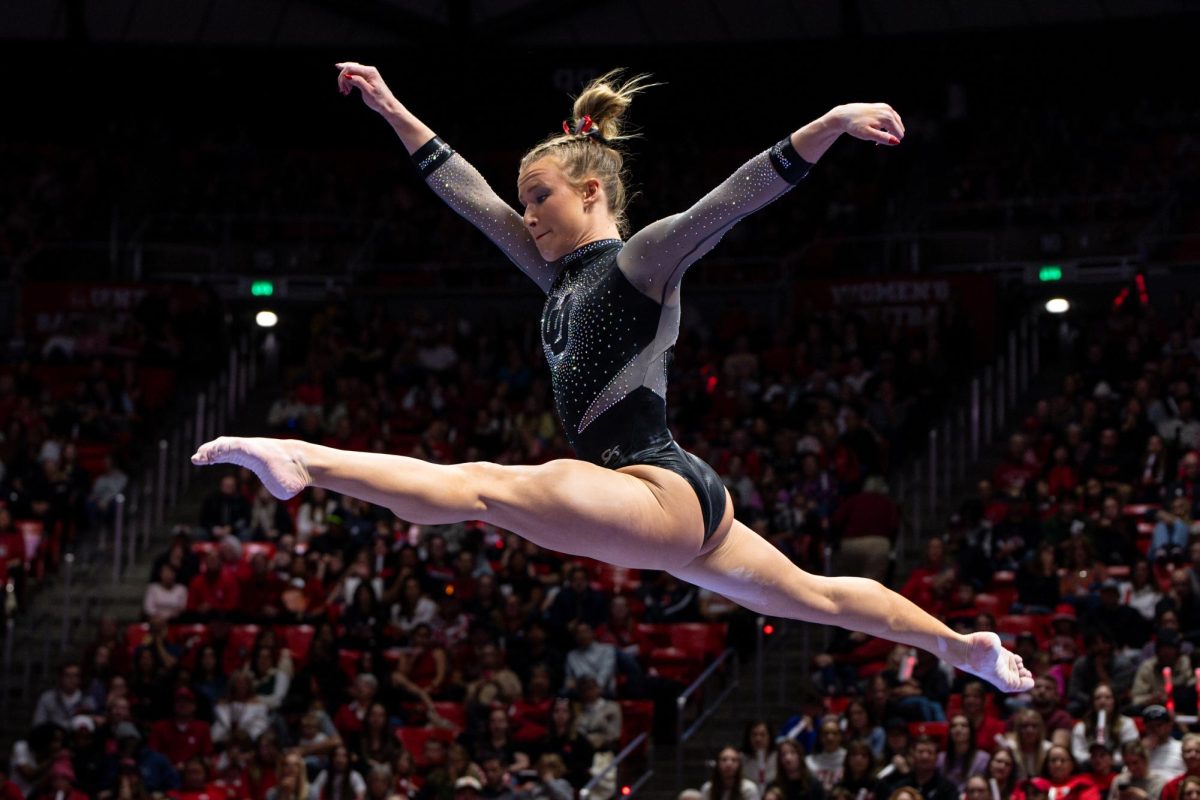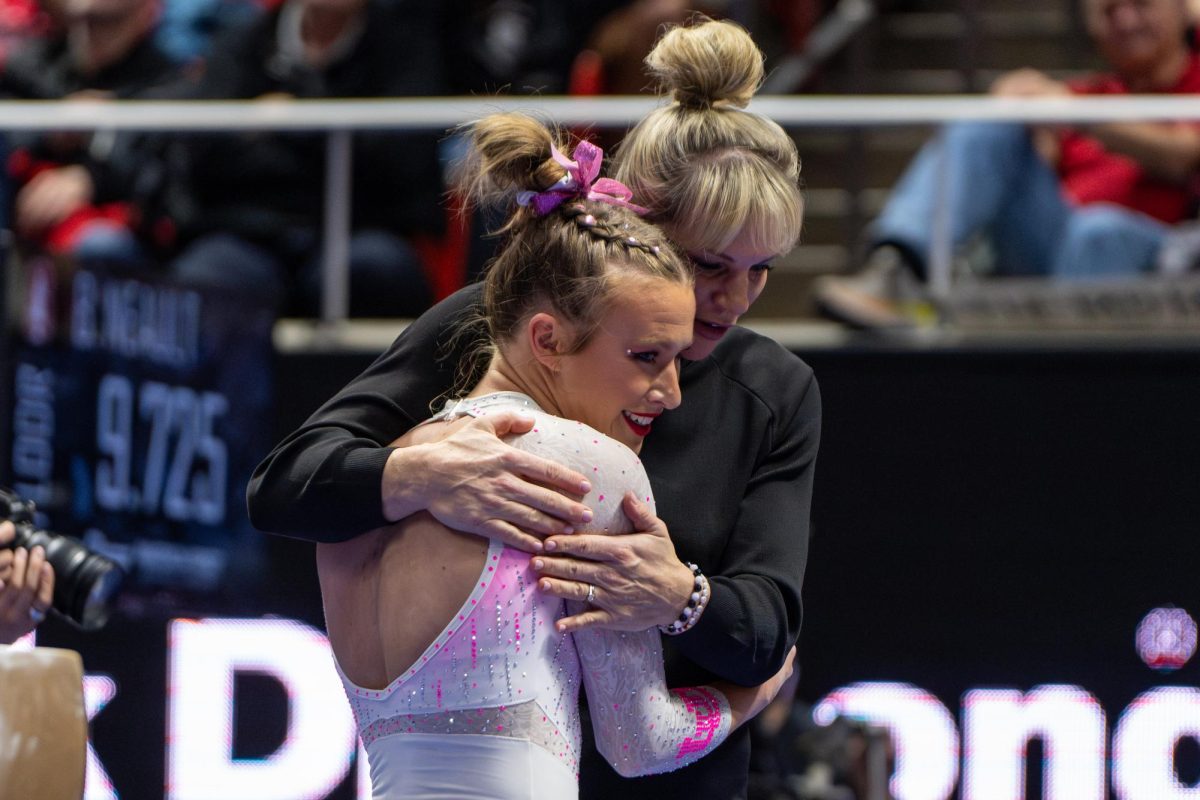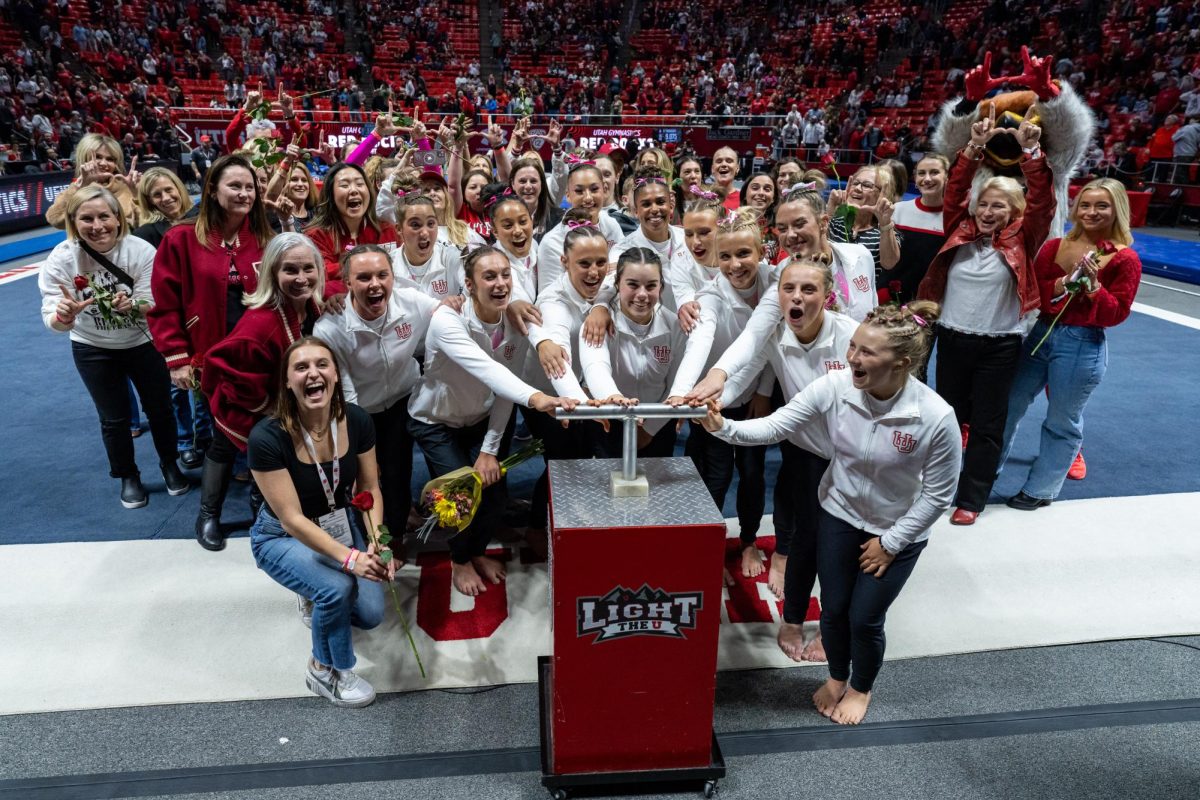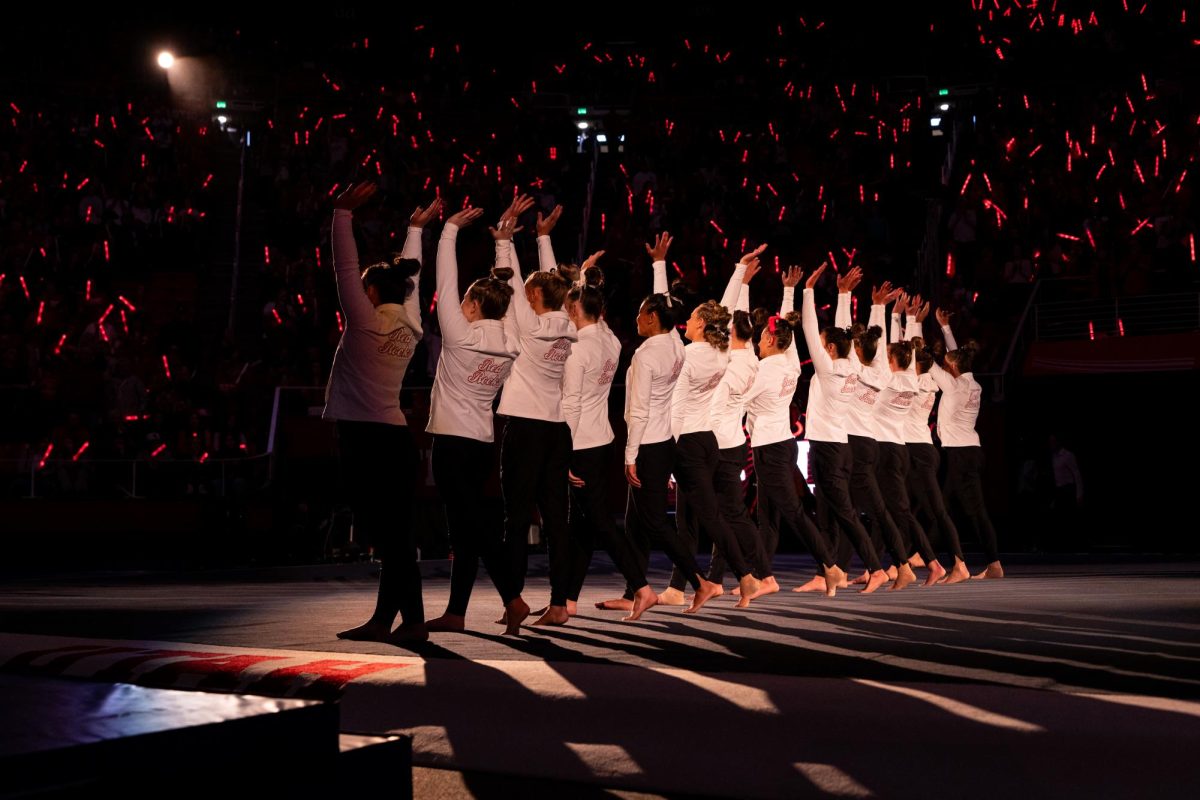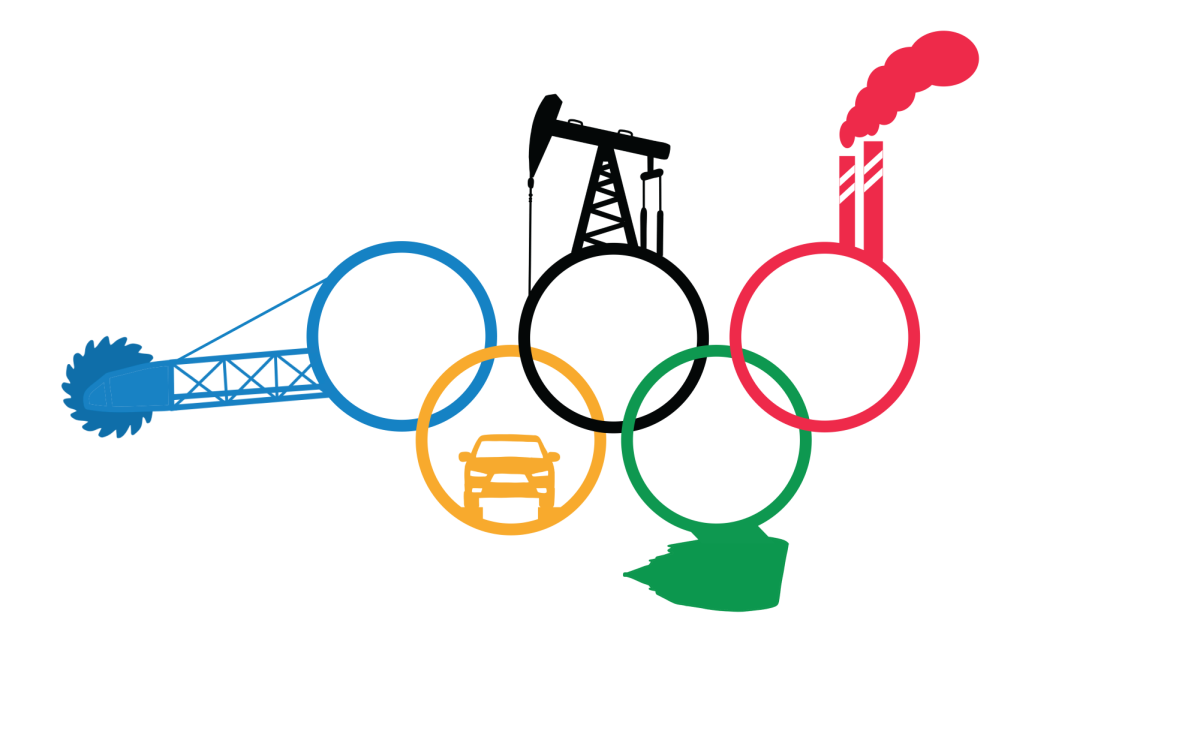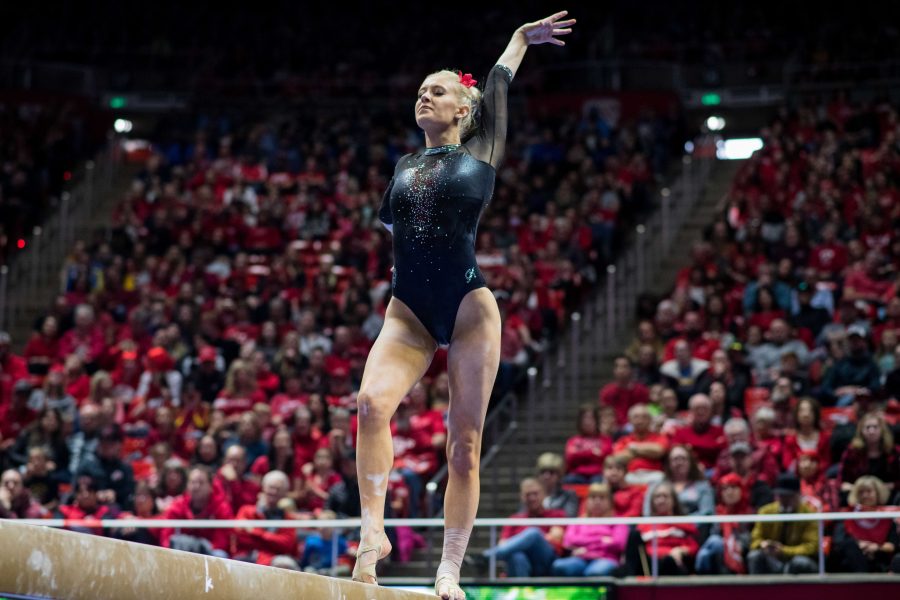Walking on a 4-inch-wide curb is hard enough for a regular person. Now imagine not only walking across this but also dancing, spinning and doing acro series on it. Now imagine doing all of that 4 feet off the ground.
Welcome to the balance beam, where gymnasts have to do all the tasks mentioned above and try to not fall off. How do gymnasts walk on this without falling off? How do they maintain focus on this event? How much does a fall cost on this event?
Deductions
Just like on the other events, there are some obvious places for deductions, but there are some that are a little harder to see.
Wobbles can lead to a deduction from 0.05 to 0.30, depending on the severity. This is somewhat subjective, with judges being too hard on some gymnasts and not hard enough on others.
Small balance checks are usually given a 0.05 deduction, whereas wobbles are usually in the 0.10 range if there are multiple balance checks occurring.
A balance check is where a gymnast has little movements from side to side to stay on the beam. Hesitations on the event are also given a 0.05-point deduction. Trying to maintain balance on the beam is a flat 0.30 deduction. This is usually given to people who are grasping at the beam to avoid falling off.
If a gymnast does fall off the beam, it is a 0.50 deduction.
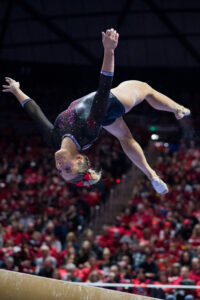
(Photo by Curtis Lin | Daily Utah Chronicle)
Judges can also find deductions in the leaps and jumps a gymnast does during their routine. University of Utah Red Rocks gymnast MaKenna Merrell-Giles says that one thing that the untrained eye can not see is the angle of the splits. When gymnasts do splits on the beam they must be at a 180-degree angle.
“It has to be completely flat, 180 degrees. Sometimes when the fans see the scores and they don’t quite understand, its because their leaps might be the deduction,” she said.
The deductions on this can be anywhere from 0.05 to 0.2.
Just like in the other events, small steps on landings usually lead to a 0.05-point deduction and larger steps a 0.10 deduction. Hops usually take 0.05 off of the total score. Just like on bars, the college stick rule still applies. The highest the landing deductions can get on this event is 0.30 off of a point.
Connections are key to this event. According to Merrell-Giles, this is another spot where the untrained eye can get confused.
“To the untrained gymnastics eye, things can look connected but they really weren’t,” she said.
If a gymnast does not have connections, they will not be eligible for connection bonuses. They also risk losing 0.20 on their dance combination.
More specific places that judges can take points from are from pausing during the routine (gymnasts are not allowed to pause on the event for more than two seconds). According to the NCAA rulebook, if gymnasts have insufficient use of the entire beam, insufficient distributions of elements and choosing elements that are not up to the competition level, the judges will mark down total scores in those areas.
The things mentioned above are not as important as the big four mentioned before, but those who can get big air on the event are more likely to be awarded.
Beam Breakdown
Just like on the bars, gymnasts need to have the basic requirements of three A-level skills, three B-level skills and two C-level skills for the basics of the routine.
Along with that, gymnasts need to complete special skills each valued at 0.2 of a point to get up to the possibility of a perfect score.
The first of these items is an acrobatic series. A common one that gymnasts do is a back handspring combined with a layout. An acro series is composed of two acrobatic flight elements that have to be connected. At least one of these must have a difficulty of C or higher.
Also needed is a combination of dance elements. This doesn’t mean the gymnast has to break it down and choreograph a bunch of dance moves, it means that they have to complete at least two jumps or leaps without pausing. One of the two must be at least a C-level skill.
Alongside the acro series, gymnasts must have one skill that shows a 180-degree split. Most gymnasts accomplish this during their leap sequence.
A full turn is also required during this event. It is most common to see gymnasts just doing a basic full turn since it is less risky than other moves.
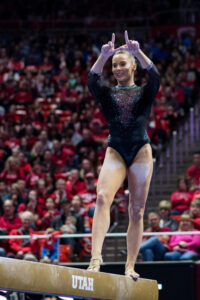
(Photo by Curtis Lin | Daily Utah Chronicle)
The final required element is the dismount. According to the NCAA rulebook a dismount must be, “a minimum of C dismount, or B dismount preceded by and directly connected to any D acro element.”
Failure to include any of these items leads to a 0.20 point deduction.
Beam is one of the routines that gymnasts can show a little bit more personality than on the bars and the vault. Red Rocks co-head coach Megan Marsden tries to make each routine different than others, playing off the skills of the team she has.
“It’s not necessarily something you can have every athlete have but you can try. Sometimes athletes need to conform to the elements they can do well and consistently and some get the opportunity to do those things with unique things. Others have to stay with the mainstream elements,” she said. “So I do the best with the athletes I have assembled and what I think they can handle and still hit on a regular basis.”
Only two events in each meet have a time limit and this is one of them. Routines can’t be longer than one minute and thirty seconds. But according to Merrell-Giles, routines on the team usually do not go over a minute and fifteen seconds.
Beam is Merrell-Giles’ favorite event to compete in. She says that one of the biggest things that gymnasts need to do to maintain focus on the event is to be very ritualistic. Merrell-Giles says the same cue words before she starts her routine, as well as during parts of the routine to make sure she stays focused.
“You just gotta be so calm, with beam you have to go with complete confidence and complete assurity (sic) in yourself. If there is any doubt that creeps in, it’s so hard to get that out of your head,” she said.
Wrapping it all up
Next week we finish up on the fan favorite event: the floor exercise. This event is able to get fans in seats to participate in their own way. On the floor, gymnasts can cut loose and show the judges and the fans a little bit of who they are with their music choice, dancing and high-flying tumbling passes.







